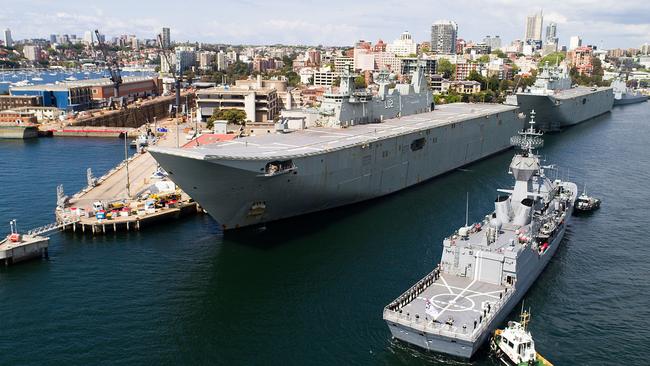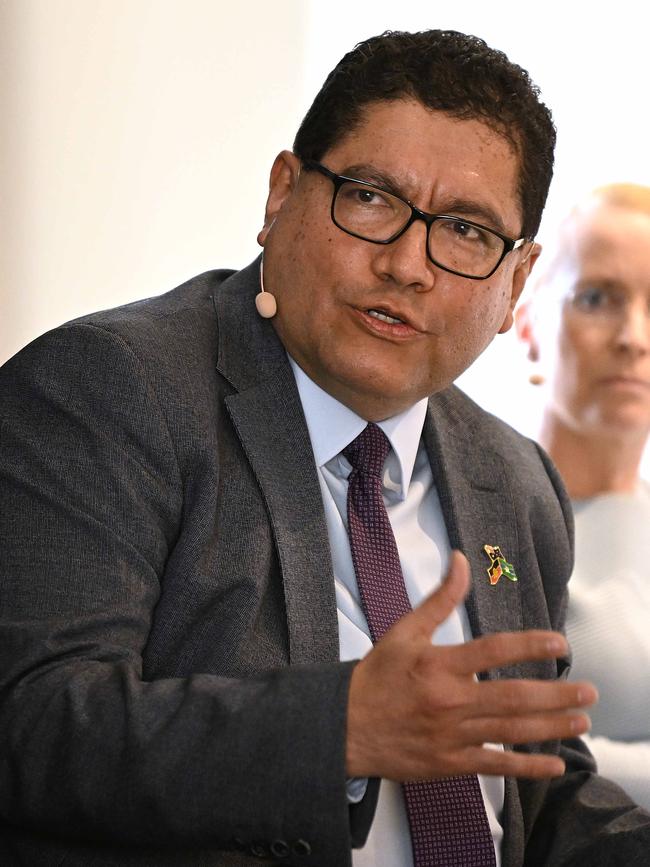Defence Strategic Review propels cyber warfare into the frontline of Australia’s national security
The elevation of cyber threats recognises that in the future, wars and other conflicts will take place online as much as on land or across the seas.

The elevation of cyber and information threats as one of the five strategic priorities in the Albanese government’s Defence Strategic Review recognises that wars and other conflicts in the future will take place online as much as on land or across the seas.
Australia’s distance from physical threats has long shaped the nation’s thinking around defence. But cyber warfare is no longer “bound by geography”.
This means Australia’s sophisticated and at times fragmented telecommunications, financial and energy infrastructure are on the front line of potential cyber attacks. And for any attacker these targets are a sure-fire way to cause substantial social and economic disruption.

As part of a slate of recommendations to reshape the nation’s defence force the strategic review nominated cyber as one of the domains alongside maritime, land, air and space where the future threats will come from.
The fast-evolving and potentially destructive nature of artificial intelligence has only added to the urgency.
Corporate Australia from Medibank to Optus is only just beginning to feel the full impact of cyber hits, which over the past year has crippled their operations and caused massive reputational damage.
For now the aim of these attacks are financial rewards but it shows the vulnerability of corporate systems to being disabled completely.
In Medibank’s case the ransomware hackers were traced back to a Russian crime gang. In recent weeks lender Latitude has seen data linked to millions of customer accounts stolen. The big four banks each experience tens of millions of hacking attempts each week and it only just needs a handful of these to be sophisticated to cause disruption.
More Australian businesses and institutions such as hospitals and universities are likely to be targeted in coming years, with attacks set to become more audacious.
As brutal as the physical battle in Ukraine has become, the war there has given an early insight into a fight that has a major cyber element to it.
Heading into the conflict Ukraine bolstered its cyber preparedness including backing up data to the cloud in the case of the loss of physical data assets and increased the protection of its vital communications and energy infrastructure from Russian-backed cyber attacks. The European Union has condemned Russian actions against Ukraine saying they are “yet another example of Russia’s continued pattern of irresponsible behaviour in cyberspace which also formed an integral part of its illegal and unjustified invasion of Ukraine”.
Ukraine is also getting a technology edge on the battlefield through the support of sophisticated western weapons. And on the ground Ukrainian troops are using thousands of Starlink satellite internet terminals (made by Elon Musk’s SpaceX) to operate tiny armed drones and communicate securely.
“Cyber strength”
Among its recommendations the Defence Strategic Review called for the creation of an Chief Information Officer role and management leadership that sits across all of the nation’s defence forces to drive cyber strategies and technology.
The review also wants to scale up the nation’s cyber defences as well as undertaking a ground-up overhaul of core systems, including shutting down legacy technology platforms.
In defence terms cyber strength also means being able to support the hi-tech nature of a modern defence force.

The review released this week said the Australian Defence Force is “no longer fit for purpose” in a more dangerous era and Australia needed to respond to new threats by changing its defence structures. This involves moving to advanced and long-range weapons, being prepared for undersea warfare as well as integrating its air and missile defence systems. Each of these areas will require substantial technology support. This includes management and design of high-security networks, cyber management, robotics as well as building up a fully-trained defence technology workforce.
“More attention and resources must be devoted to crucial future-focused joint capabilities such as information warfare, cyber capabilities, electronic warfare, and guided weapons and explosive ordnance,” the review said.
“Force design must also embrace changes to mindsets and technologies to deliver competitive advantage”.
Significantly, the report called for more work on cyber security to be done in-house, noting there has been a drift towards using more contractors in defence over recent years. The review wants to rebalance the workforce so that 60 per cent are either public servants or defence force workers.
Getting the right IT workers also remains one of the biggest challenges for defence.
Indeed the report noted there are already shortages of senior in-house technology staff, resulting in project delays and operational issues.
The scramble for staff is being felt right across the economy with businesses big and small and across all industries also looking to boost their own cyber capabilities and get ahead through automation and AI technology. With the demands of defence this means the battle for tech talent is just beginning.
Copper overhaul
BHP has elevated Oz Minerals executive Michelle Ash into the key role to oversee copper expansion projects already underway in South Australia including processing plants and block cave development at the Carrapateena mine. Ash is new to OZ, only joining the copper miner in March last year and then several months later BHP launched its takeover that eventually won support at $9.6bn.
At OZ Ash was the chief technology officer where she oversaw mining technology and transformation, robotics and automation. She has a 20-year career in mining and manufacturing, including heading up technology at US giant Barrick Gold. Ash’s growth remit covers building a “copper province” in South Australia and also covers BHP’s giant Olympic Dam copper mine although BHP has gone back to the drawing board several times on expansion plans.

Ash is one of the few to move over to BHP with the merger triggering the exit of a string of top Oz executives including chief executive Andrew Cole who stepped down on Monday. Oz chief financial officer Warrick Ranson and operations executive Matt Reed have also stepped down as has top HR executive Fiona Blakely.
In an internal memo BHP’s chief operating officer Edgar Basto thanked Oz’s management team, including Cole, for building the copper miner “into the successful, agile and innovative company that it is today”.
BHP’s senior Olympic Dam executive Justin Bauer will now oversee Oz Minerals operations in South Australia while the existing Carrapateena and Prominent Hill management teams will remain in place.
Through the takeover of BHP chief executive Mike Henry talked up Oz’s operational management and workforce and strongly aligned corporate culture as something he wanted to retain. With final regulatory and legal approvals in place the new structure and Oz workforce will be folded into BHP on May 2.
“A little over one week from now … we will welcome our new colleagues from OZ Minerals to BHP. We will bring together our people and our two great Australian companies, to create something more than the sum of our parts,” Basto said.
Oz shareholders this month overwhelmingly backed the BHP deal, ending the company’s 15 year tenure on the ASX.
johnstone@theaustralian.com.au




To join the conversation, please log in. Don't have an account? Register
Join the conversation, you are commenting as Logout